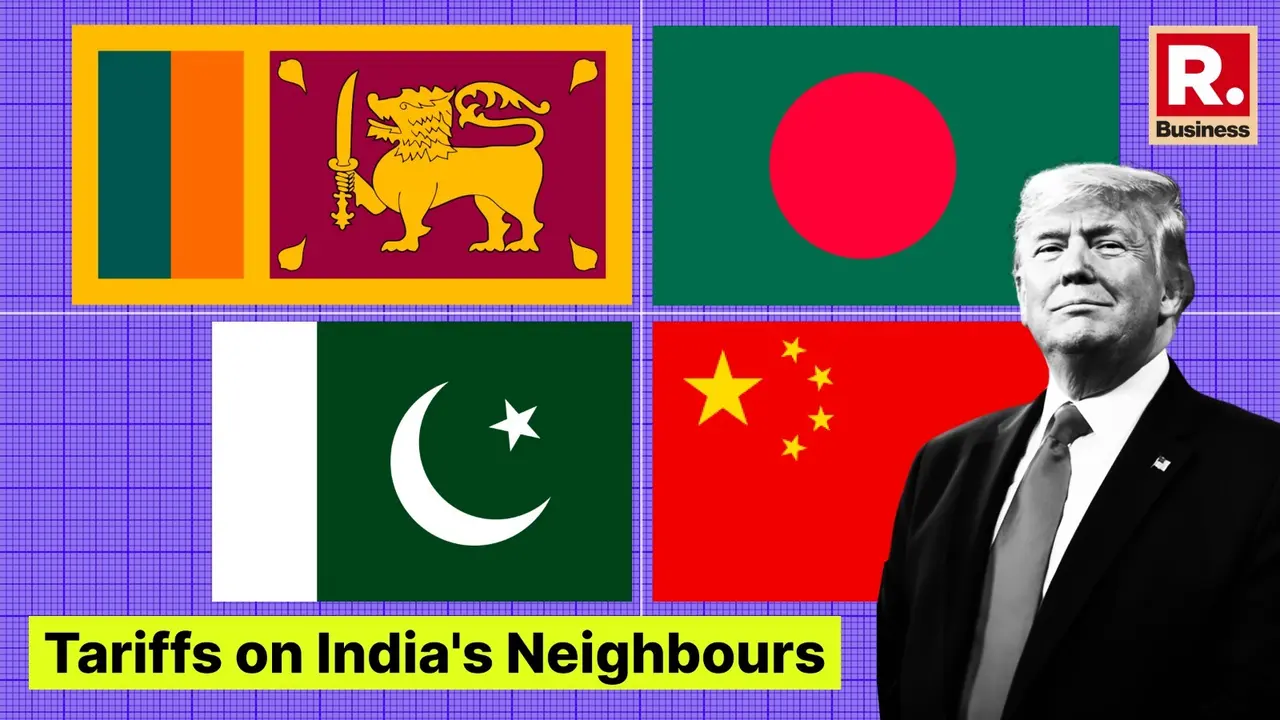Updated 3 April 2025 at 18:45 IST
Pakistan, Bangladesh, China, Sri Lanka: How Much Tariffs Are India’s Neighbors Paying To US?
The United States President Donald Trump has imposed some of the steepest tariffs ever seen in this century, his 'Liberation Day' address.
- Republic Business
- 3 min read

The United States President Donald Trump has imposed some of the steepest tariffs ever seen in this century, his 'Liberation Day' address, sending shock waves through the global economy.
Not only is India surprised at the 26% reciprocal tariffs that have been imposed but so is the rest of the Indian subcontinent and other Southeast Asian countries.
Donald Trump's Tariffs On China
India's neighbor China, has been slapped with one of the highest tariffs of a 34%, after which the country has urged the US to correct its 'wrongdoing' over reciprocal tariffs.
The US imposition of 34% levies on Chinese imports as well as additional tariffs on China and other countries has "severely violated" the WTO rules and "harmed" the rule-based international trading regime, Ministry Spokesperson, Guo Jiakun, was cited by a Reuters report.
Advertisement
Donald trump's Tariffs On Pakistan
India's immediate neighbor Pakistan has been slapped with 29% tariffs by the Trump administration. This is because the South Asian country imposes a 58% tariff on US goods.
According to a report by Arab News, US is a key market for Pakistani exports, with bilateral trade estimated at $7.3 billion in 2024. This is seen as a jolt to the economy which has still not managed to recover from the COVID-19 pandemic.
Advertisement
US exports to Pakistan had reached $2.1 billion, marking a 4.4% increase from the previous year, while imports from Pakistan totaled $5.1 billion, up 4.9% compared to 2023.
"Pakistan has been charging is a 58% tariff on our goods," Trump said, adding, "hence, we are imposing a 29% tariff on their products."
Donald Trump's Tariffs On Bangladesh
Bangladesh is facing about 37% of reciprocal tariffs that have been imposed by Donald Trump's administration.
As per a Reuters report, Bangladeshi suppliers, specifically from the garment industry, with clients such as Gap Inc and Vans parent VF Corp, said that they began seeking government support hours after Trump's lightning bolt.
The readymade garment industry in Bangladesh is of great importance to the country's economy, accounting for over 80% of their total export earnings, employing 4 million people and contributing roughly 10% to its annual GDP .
Donald Trump's Tariffs On Sri Lanka
While Sri Lanka has been impacted with 44% reciprocal tariffs, the Sri Lankan President Anura Dissanayake's office said in a statement that a panel of government officials along with apparel companies has been set up to study the "potential issues" that could arise from the tariffs.
A Reuters report cited Yohan Lawrence, Secretary General of Sri Lanka's Joint Apparel Association Forum, saying, "Sri Lanka could very quickly see its share of U.S. business move to countries with lower tariffs."
The country exports approximately 40% of its exports in the form of apparel to the US. Apparel is also the nation's second largest foreign exchange earner, employing 300,000 people.
Published By : Sagarika Chakraborty
Published On: 3 April 2025 at 18:19 IST
